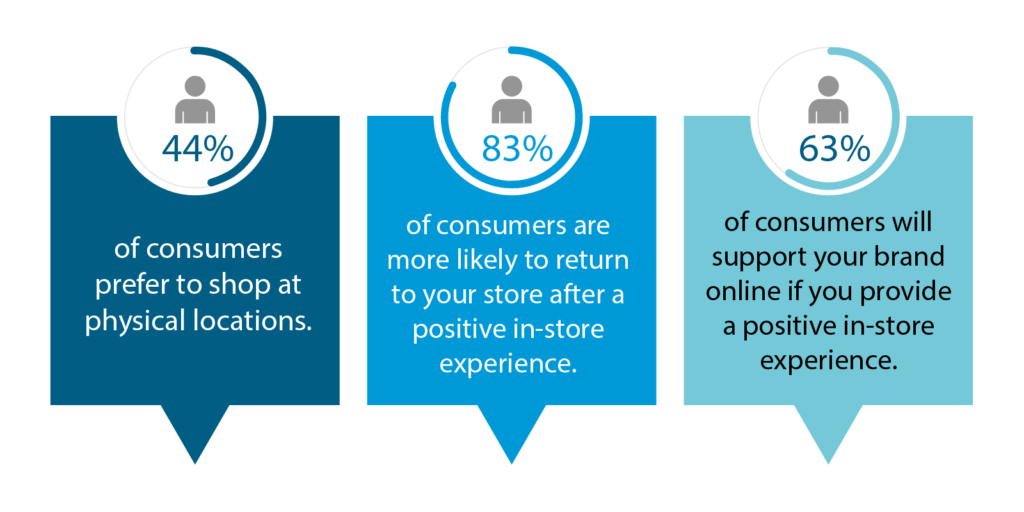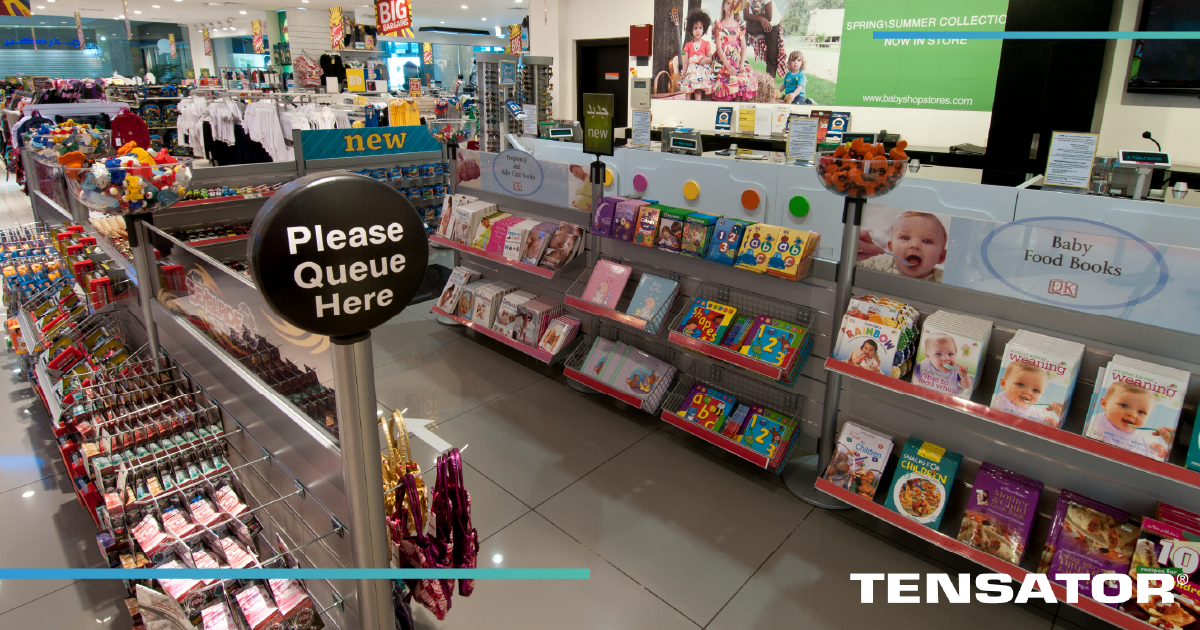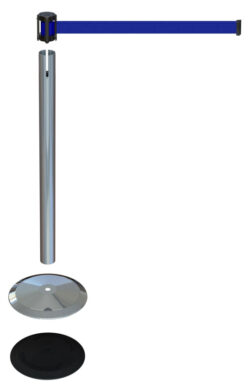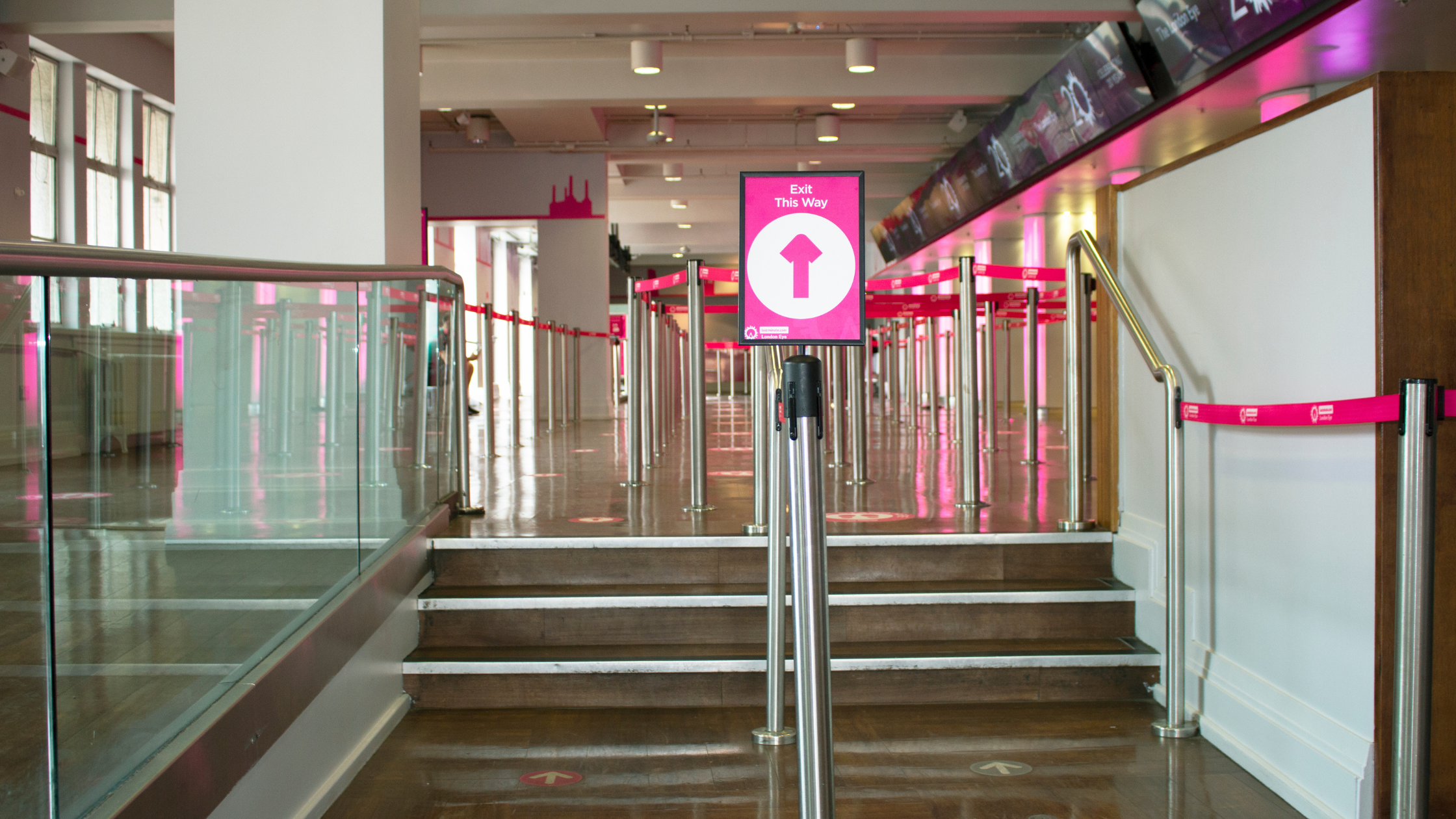- Home
- Sectors
- Solutions
- Tensabarrier®
- Tensamedia® Wayfinding and Signage
- Lawrence® Post & Rope
- Tensator® Airport Passenger Guidance System
- Electronic Queuing – eQ™
- Tensaguide® Modular Barrier System
- Tensator Micam Protection – TMP
- Safety Solutions
- Access Control
- In-Queue Merchandising
- Virtual Queuing – VQMS
- Tensator® Virtual Assistant
- Custom & Bespoke Solutions
- Resources
- About
- Contact Us
- Shop
 English (English)
English (English)
11
Oct


Between January 1st and September 30th, crowds and are normally manageable by your store staff. Customer journey management is easy even with the occasional peak, like Valentine’s Day or the weekend after a national holiday. These spikes in visitor traffic are normally expected and usually there are measures in place to handle the temporary increase.
Once you reach October 1st however, you will be officially in Q4.
The final countdown before New Year.
Otherwise known as “the Holiday Season”.
Otherwise known as “Peak”.
The time for browsing is over: the period of purchasing begins.
Customers visit retail shops not to simply look at products, but are instead aiming to spend. Even with the meteoric rise of online sales over the last few years, there are still many customers who still prefer shopping at physical locations. There will still be a large rise in consumer traffic during what is usually the busiest period of the year.
If your retail customer journey is not ready to cater for consumer needs and requirements, you risk providing poor in-store experience. This can then hinder your business’ Q4 sales and profits. A blow to revenue generation during the holiday sprint can be catastrophic.
Below, we will go into the benefits of a positive in-store experience and how Tensator can help you achieve this, while drawing attention to the dangers of a bad customer journey.
A positive shopping experience
Put the customer first. This isn’t a new notion. Almost everyone in the retail sector will have heard this and most staff will try to make this notion a reality. But aside from retailers helping customers find their objectives, what is the actual benefit to putting a customer first?
A study made by Raydiant called the State of Consumer Behavior 2022 explores the customer’s mentality in the retail industry. They highlight the following:
There are many other stats which delve into the mind of the consumer, but from these three you clearly see the impact a positive in-store shopping experience can have for your business.
If executed correctly, an excellent shopping experience can create a connection between your physical and digital storefronts. Looking at the 44% stat closer, it simply states a consumer prefers to shop in brick-and-mortar retail stores. This doesn’t mean they will only shop in these. By providing a positive customer shopping experience, there is a chance customers will continue to use your brand online as well.
5 reasons why consumers prefer shopping in-store:
- Enjoying the experience of shopping in a store and visiting a physical location (27.6%)
- Able to see and touch products directly before purchasing (24.7%)
- Prefer to not wait for delivery (11.9%)
- They don’t want to pay shipping costs (10.8%)
- Local retailers offer unique products they can’t find online (5.3%)
From these five reasons, it is apparent a convenient shopping experience is a big drive behind the consumer’s motivations when visiting a retail store. When in-store, a good customer journey design will allow visitor to indulge their senses. This helps a consumers make better informed decisions. Strong customer journey examples include allowing visitors to smell candles, or touch the fabric of new clothing. Doing so provides an immersive shopping experience.
To be unique and positive, a retailer with brick-and-mortar stores needs to play to their strengths. Leaning into an evocative environment by highlighting sensory aspects is a huge advantage over digital retailers. As a result, your store can provide a luxury shopping experience which gives retail advantage over online choices. This ideal customer journey will help you maximise sales as well as revenue.
Customer Journey Pain Points
To truly improve the shopping experience, look first at what the potential pain points would be for a visitor.
Olivia Robinson in her article Revealed: Retail Consumers’ 7 Biggest Customer Experience Pain Points in 2021 cited and compiled 7 customer journey problems which can cause issue:
- Uninformed staff colleagues.
- Locating a staff colleague on the store floor.
- Locating the product.
- Lengthy checkout queues.
- Untidy stores and shelves.
- Product prices: unlabelled or wrong.
- No recognition for their loyalty.
Please note these 7 points are a generalisation. The retail industry plays host to many stores, shops, and locations. There could be challenges completely unique to your business, which means different retail solutions might be needed. However, this won’t necessarily stop the common denominator to these potential hindrances: inconvenience.
Looking back at the Raydiant study, they noted one of the important factors for customers when they shop at a physical location was convenience. Here is the full pie-chart:
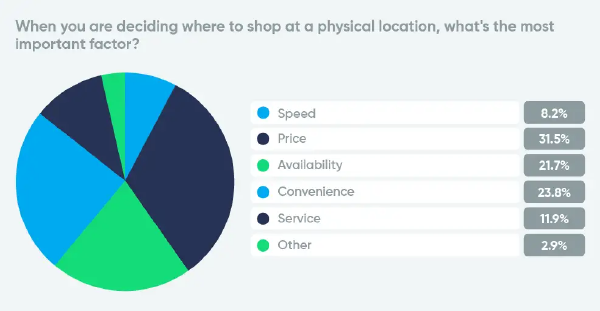
As you can see, “convenience” is the second most important factor to a customer’s in-store experience. The most important factor was pricing, which is unsurprising. If you combine this statistic with the seven points cited by Robinson, the reasoning behind a customer pain point begins to solidify.
If the customer is inconvenienced within your store, regardless if it is staff or product placement, the customer associates this with a bad shopping experience.
So how do you go about mapping the customer journey make it more convenient, and therefore more positive?
A Tensator Solution to Customer Management
“To keep a customer demands as much skill as to win one.” – American Proverb
Tensator solutions are designed to improve the customer journey in many ways. It is important to note the first point of Robinson’s list is more of a knowledge / training factor. For the remaining six, Tensabarrier products can directly address the potential problem or help alleviate the pressure on your staff.
For example, using clear signage to highlight product locations means your customers may not need to ask your staff for directions. This provides your consumers the autonomy to shop by themselves. As a result, your staff will be free to perform other value-added activities. For example, organising shelves or helping with more detailed queries. With the increased volume of customer footfall during Q4, providing the means for independent shopping is an ideal way to maximise staff efficiency while providing a good customer journey.
Combined with the tactile elements found in physical retail stores, this autonomy can provide a more personal shopping experience for customers. This can help further optimise the customer journey during peak periods.
Tensabarrier®
The classic Tensabarrier retractable barrier. Invented in the late 1970’s, the Tensabarrier® was the first ever retractable barrier on the market. This makes Tensator an original equipment manufacturer.
What does this mean exactly?
Basically, every retractable barrier product you see which is not a Tensabarrier® is simply a copy. Inferior. The Tensabarrier® retractable barrier has been optimally designed to:
- Resist everyday wear and tear with high quality materials.
- Keep staff and pedestrians safe with the originally patented braking system.
- Deter queue jumpers due to barrier webbing height and length.
By using the Tensabarrier® products to establish clear boundaries and an efficient queue system, you can reduce the number of pedestrians spilling out into your shops walkways. A good queue will help with retail management by ensuring customers won’t feel they are waiting too long for service.
Be aware the length of a queue can have a direct impact on the psychology of your customer. The longer a queue appears, the higher the chance a potential consumer avoids your store all together.
According to a report titled “How Long Does It Take to Lose Your Customer”, the following was highlighted:
- 25% said they would only wait a maximum of 2 minutes.
- 59% said they would wait no longer than 4 minutes.
- 73% said they would abandon their purchase if they had to wait for more than 5 minutes.
With this in mind, establishing a queue which can help quicken customer journey flow during busy periods can be an important factor to reduce queuing times in your store. Doing so helps provide the best shopping experience possible for customers.
Tensamedia Signage Solutions
Signage is an easy way to help your customers navigate your store easily while improving the customer journey process. From providing information to highlighting promotions, business signage is a creative retail tool which can improve your in-store experience.
Signage products have many uses. From easing navigation in your store to highlighting product promotions designed to boost impulse purchasing. Custom signage combined with a reliable queue system is the perfect way to promote independent retail shopping from your customers while creating an easy shopping experience for visitors.
A marketing survey from 2021 found 66% of respondents have had a poor opinion of a business because of its signage. [Source: Custom Neon]
Highlight important information while pleasing the eyes of a retail customer. For maximum impact, use your own branding and artwork with digital totems and custom signage. A perfect way to boost your brand and add a touch of colour and class to your queue space.
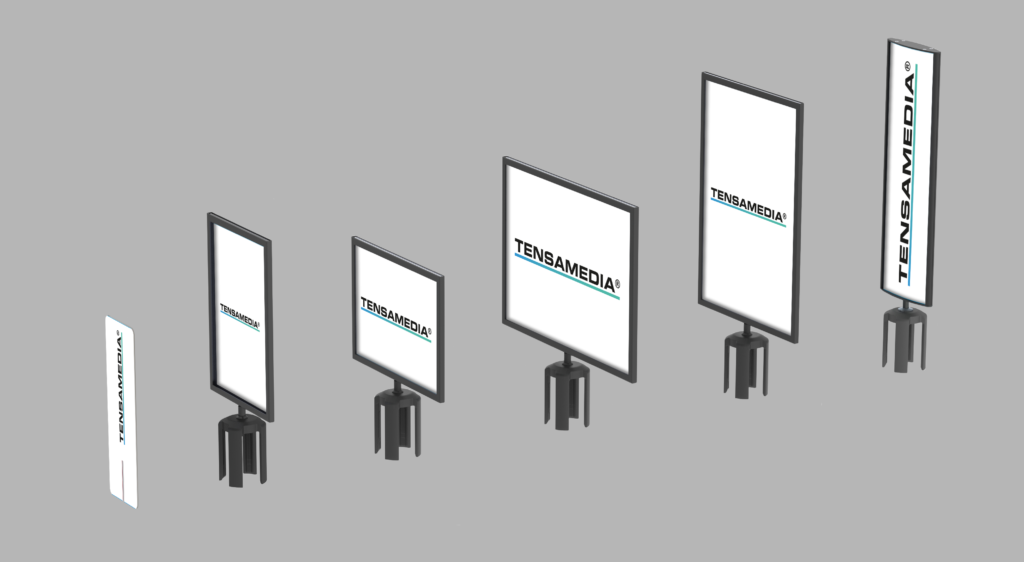
Tensamedia Post-Top Signage Solutions
A Better Customer Journey
If your aim is make a better retail in-store experience which is more convenient for customers, then wayfinding signage is an excellent way to do this.
- InQ-Totems® are customisable metal signs which can provide clear instructions to customers.
- Fluted InQ-Totems® are highly visible solution which can easily catch the eyes of passers-by.
- An InQ-Portal® is perfect for larger crowds in huge spaces as they clearly mark the start, middle, and end of queues.
In your retail company, you may find obstacles such as display stands which can block a customer’s line of sight to important facilities. Especially when your store is busy. The three products listed above are taller and more visible than typical signage products like post top sign holders. This makes them perfect for organising large, busy crowds as information is displayed clearly.
Use retail signage products to clearly mark product locations and key points in your store. This will provide visible focal customer journey points throughout your shop. This means visitors will be able to navigate your shop floor more easily with less need to ask staff queries about where to go.
Tensamedia signage solutions: providing an orderly and enjoyable experience.
EQ System
Without an efficient queue system, you just have a chaotic crowd waiting to be served. However, when you have done all the work to provide a positive customer shopping experience in your store, you don’t want to lose momentum at the very end. But the final hurdle can sometimes be the toughest.
Install a Tensator eQ™ system to ensure a smooth and efficient queue flow. Doing so can:
- Reduce customer wait times by up to 30%.
- Combine with digital media and boost profitability by up to 96%.
- Improve staff utilisation by up to 30%.
In our article, “How To Handle Queue Jumpers”, we posited how every queue is “built on the foundation of fairness.” When a shopper witnesses queue jumping in any form while they are waiting patiently, it can lead to frustration and a negative shopping experience.
A single line queue is proven to be the fairest and fastest way to process customers: they are served in the order they arrive. This helps provide a smooth customer journey towards the end of the shopping experience.
The electronic queuing system calls a customer to the checkout when they reach the front of the queue. With this system, even during the noisiest periods of peak, your customers will know exactly where to go without confusion. Plus your staff won’t have to lean and wave to motion them to the point of sale.
Manual or Automatic?
Regardless of your choice, your staff can staff can stay focused on serving customers.
- Manual call forward systems prompt passengers to move along the queue at the push of a button.
- Automatic call forward systems require no manual intervention at all. The next in line is called forward automatically to the next vacant service position. A simple, visible process, which has been shown to help staff serve up to 25% more people per hour.

Digital Totem
To ensure a true customer journey optimisation, you can use digital totems to boost impulse purchasing in your queue space. While a customer waits at the front of the queue, the HD screen can be set to play media relating to your promotions or marketing messaging. This is ideal for pushing price drops and new products regularly.
According to the survey conducted by Millward Brown (commissioned by digital POS provider Impax Media), digital signs are 34% more effective at promoting items than their static equivalents.
Dangers of a Bad Customer Journey
“Good customer service costs less than bad customer service.” – Sally Gronow, Customer Manager, Welsh Water
When analysing the customer journey, it is important to know what can occur if consumers suffer a bad shopping experience. Doing so will help you understand why the customer journey creation aspect of your store is crucial.
Raydiant found 44% of shoppers prefer to go into a physical location. If your in-store shopping experience isn’t good enough, your customers could either order online or potentially switch brands entirely.
This leads us to our second point: customer loyalty. Customers have a massive selection ready at their finger-tips. Competition is tough, and customers can be fickle.
Keep this in mind when reading the following:
- 77% consider the in-store customer experience to be either “important” or “very important”.
- 55% of consumers have stopped purchasing from a brand because of a single bad in-store experience.
- 83% of consumers will likely tell others about a poor in-store experience.
A poor shopping experience can clearly have a big impact to any brand. The holiday season is already stressful for many shoppers. Throwing in a poor customer experience on top of this can ripple through your shoppers, making them wary of coming into your store when you need them most.
The Shopper’s Nightmare before Christmas
Imagine being your customer during peak. The shopping centre and retail parks are heaving. Your knees are weak and arms are heavy as you carry a selection of bags. There’s only a couple of things to get but a busy department store is next on the list.
Busy is expected….but your store is in utter chaos exacerbated by a poor customer journey.
No staff are in sight. You are struggling to navigate through busy crowds. There’s no map or navigation, and you can’t find the gift sets for your Secret Santa. Eventually you find out they are on floor 3…but where’s the lift? (5 more minutes of wandering while being shoved and bumped from all directions).
When you do finally get there, you find products are strewn everywhere. It takes a few trips around the shop floor but you eventually find what you needed.
Back to the ground floor to pay. Unfortunately, the queue system is confusing, so you spend another 10 minutes waiting in the wrong queue by accident.
By the end of the line, you’re at the end of your rope.
And then as the relieving sound of the cashier’s “doot” from the scanner sounds, the price is double what you thought because it was incorrectly labelled….
Would you be surprised if this customer never came back to your shop?

A busy shopping centre during the holiday season.
Reaching Peak Performance
The time for browsing is over. The period of purchasing has begun.
Q4 is here, and with it crowds are going to grow. Ensuring a positive shopping experience and a clear customer journey is the best way to maximise revenue. To recap, the ways to do this are:
- Incorporating clear wayfinding signage.
- Installing an efficient queue system in place for larger crowds.
- Promoting independent customer shopping to free up staff.
Convenience is key. Prepare your store to handle the increased customer footfall. This will ensure consumer pain-points are addressed before becoming a problem. With customer loyalty notoriously fluid, making your brick-and-mortar retail shop an oasis of serenity in the tumultuous sea of Q4 is the perfect way to boost sales and profits during the holiday season.
Positive in-store customer journeys are crucial to the success of your business during the holiday period. As a retailer, installing visible signage and efficient queue systems could be the best way to make sure this happens.
Did You Find This Blog Helpful?
If you found this blog interesting, helpful, or informative (or even all 3!), then please:
- Let us know with a comment.
- Add a link in your next post on social media.
- Provide a link in your next email newsletter.
- Bookmark this page and revisit later.
- Get in touch with us for any questions or queries you have!
You can also follow us on LinkedIn, Facebook, Twitter, and Instagram for more updates and interesting content. The featured image is by pch.vector on Freepik.
The featured image is by pch.vector on Freepik.
